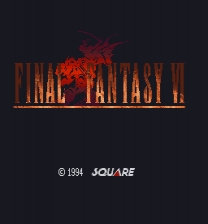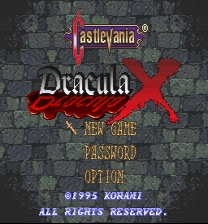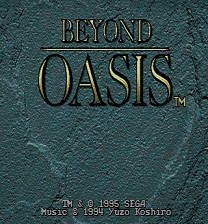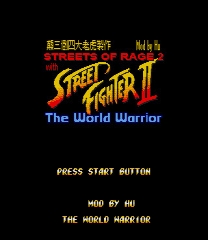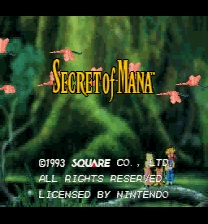Final Fantasy VI: Retranslated
written and released by: hairy_hen
based on original translation by: Tomato
This is a large-scale rewrite of the script for Final Fantasy VI, heavily based on the live translation stream featured on the Legends of Localization website. Nearly all of the game's dialog has been rewritten in order to accurately convey the meaning of the original Japanese, with particular emphasis placed on being readable and natural in English.
The initial SNES version of the game from 1994 had a surprising number of translation errors, many of which had never been documented in any form until Tomato's 2018 script comparison. The 2007 re-release for the Game Boy Advance had a much more accurate translation than the SNES version, but it was done in a very different style and still contains some anomalies in its writing. Various fan translations have been made, and while these corrected some of the mistakes found in the SNES version, they also tended to introduce new translation errors and sometimes made other questionable writing choices of their own.
The goal of this rewrite is to strip away the confusion that has surrounded the translation of this game, yielding a version that is faithful to the meaning of the Japanese script in all of its story and character details. Some of the memorable "flavor text" from the SNES version has been retained, but only in cases where the meaning of the story was unaffected by the difference in wording.
The character of Cyan has been rewritten most extensively of all, in order to present a consistent and believable representation of archaic speech. A great deal of research was done on Early Modern English to achieve this goal. He has been written to be easily understandable despite the grammatical differences, but additional documentation has been provided about the nuances of the style in order to clarify any potentially confusing elements.
To play this version, apply the patch to a clean, un-headered rom of Final Fantasy III (USA) v1.0. It is compatible with real SNES hardware as well as emulators.
For those curious enough to read it, an annotated copy of the script can be found here: https://pastebin.com/RyVqkRnY
Frequently Asked Questions:
Q: Why is this necessary at all? Aren't there already other great versions of this game? Hasn't it been done to death by now?
A: Due to the circumstances of its initial release, subsequent re-release, various fan translations, and what people have said about them all over the years, there is a lot of confusion about the meaning of various elements of the story, as well as a great deal of vocal disagreement over which version is better. While it is likely that no individual take on the script can satisfy everyone, one of the goals of this version has been to present the story as accurately as possible, clearing up misunderstandings caused by mistranslation, while keeping things in a form that reads naturally in English. Some versions of this game that have been widely played have distorted the meaning of the story to a surprising extent, but when translated accurately, the flow of the dialog and the focus of the plot are very noticeably more coherent and internally consistent.
Q: If the GBA version is so accurate, why not just port its text into the SNES and be done with it?
A: There are several reasons. First, the GBA script is considerably longer, and is difficult to fit into the available space without using a different font than the SNES version, which many people would find objectionable. Second, the writing style of the GBA script is very different, and not always to everyone's taste. Third, simply copying and pasting lines from pre-existing releases is not nearly as satisfying to the author of this version as actually writing them.
Q: So how much of this ended up being rewritten, anyway?
A: It is difficult to estimate, but a very high percentage of the dialog has been edited in some fashion. Sometimes this was merely a few tweaks to the wording to get them to sound more natural, but in a great many cases the existing lines were completely tossed out and written over from scratch. This was often necessary due to the enormous number of translation mistakes present in the SNES version. Additionally, a great deal of cleanup work was done to the punctuation and formatting, in order to present a more polished appearance to the text.
Q: How accurate to the Japanese is it?
A: Again, it is hard to put a number on it, but the overall accuracy of this version is very high. It is accurate first and foremost to intent: to the meaning of what is being said. It does not try to reproduce the literal phrasing of the Japanese; the two languages are so different as to make this impossible without sounding extremely awkward in English. The wording of each line of dialog has been carefully chosen so that the intent of the game's writers comes through clearly and without distortion.
Q: How was the accuracy determined?
A: As indicated above, the script is heavily based on the translation done by Clyde Mandelin for his website Legends of Localization. As an experienced professional translator, his assessment of the Japanese script's content may be taken as a reliable and expert opinion, and therefore the author of this rewrite chose to follow that assessment closely.
Since Mr. Mandelin's translation was done "live" while playing the game, in the context of comparing several versions of the script, it was simultaneously easy and difficult to utilize his work. Easy, because multiple scripts were viewable at all times for comparison; but difficult, because this could only be done while watching the videos of the playthrough. The text was edited while listening closely to his discussion of the Japanese script's content and nuance, with many sections requiring repeat viewings in order to ensure no important details were omitted. It took about two months to complete this task, followed by weeks of extensive proofreading and editing.
Because nearly all of the game's dialog was covered in the video series, a great deal of text that has never been documented elsewhere has now been presented in a correctly translated form. This includes NPC dialog in addition to the main story text, much of which is not present in available scripts of the game and previously remained unverified. Some dialog was not covered in the video series, most of it optional or alternate lines that can easily be missed while playing. The Kwhazit fan translation was used as a supplemental reference during editing, and this was also a helpful guide for cleaning up issues with the non-story text. A few lines with potential mistranslations may remain, but none of them have any significant effect on the experience. If it becomes possible to verify them in the future, they may be addressed in updates if necessary.
Q: What else is included aside from the script?
A: Because Final Fantasy VI was released on the SNES under a different name and in a somewhat censored form, it naturally follows that a version whose aim is to present something closer to the original would also restore these other elements. Consequently all graphics, including the title screen, have been restored to those found in the Japanese version. Enemies, spells, and items have been renamed, mostly using the current official naming scheme but with some revisions to get things a little closer to the Japanese; and item and spell descriptions have been rewritten for greater clarity and consistency. A number of bug fixes are present in order to prevent the potentially game-breaking glitches caused by coding oversights, and a small number of minor enhancements such as B-button dashing have been included for convenience.
The experience of the gameplay is largely the same as it ever was, and no attempt has been made to alter the difficulty or to insert new content of any kind.
Q: This all sounds nice, but I like the version I already have. How do I know this is really any good?
A: The only way to know for sure is to play it and find out. Obviously there will be differences of opinion about the merits of any particular version, and it may not sway anyone with strong preferences. But hopefully this will be an appealing alternative for those willing to give it a shot.
Those who are on the fence about playing this version may benefit from reading the annotated script in order to see whether the writing suits their preferences for this game.
Q: Does Mr. Mandelin know about this, and did he have any other involvement in the project?
A: He is aware of it, but was not involved with the writing in any way other than having provided the necessary translation knowledge on his website, and being inspirational to the creation of this project by having done so. Its existence should not be taken as any kind of endorsement, nor would he wish to be seen as the sole authority on such matters. But it would have been a shame not to put the information he provided to use in the game itself, and the author of this script sought to create something that would live up to the level of excellence his work embodies.
